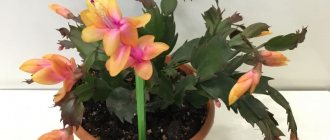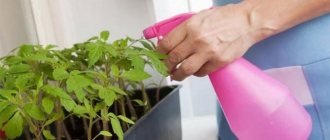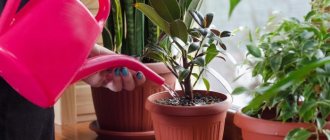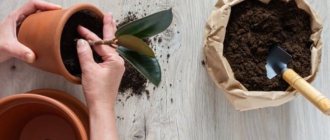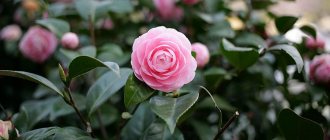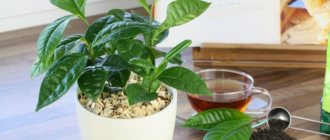The importance of water for plants cannot be overstated. This is the main component in the composition of flowers. Water nourishes with mineral salts coming through the root system from the soil, which allows for the active development of the root system and the growth of green mass. Therefore, watering is one of the most important plant care procedures. There are no exact universal recommendations on how often indoor flowers should be watered, since the amount depends on many factors, such as individual characteristics, location, time of year, etc. This article will help you figure out how to water flowers correctly and how to eliminate mistakes that have already been made.
How often to water house plants
Due to the fact that there are plenty of factors influencing the frequency and abundance of hydration, an individual approach is required for each flower. However, there are general recommendations that tell you how to water your house flowers:
- material used in making a pot. Representatives of the same species growing in pots made of clay and plastic need to be watered differently. The first will require more moisture than the second, since the water in it also leaves through the porous walls;
- The size of the pot also plays a role. Obviously, a large pot will require more water than a small one;
Watering indoor flowers
- location of the bush. Watering indoor plants located on the south side should be more intensive, especially during the warm period;
- air temperature. Plants located in a warm room need to be watered more often and more intensively than those located in a cool room. By following this rule, you can avoid drying out the soil or rotting the roots;
- the weather, which also determines how often indoor flowers need to be watered. In hot weather, the amount of water should be increased and vice versa.
Important! In everything you need to know when to stop. And in the heat, you should not water the flower garden too intensively; this should be done only as needed. And most importantly, you need to focus on the type and botanical group of the indoor flower.
What time to water in the evening?
Evening watering also has its advantages:
water is used more economically;
overnight moisture perfectly nourishes the plant without evaporating.
The optimal time for watering the garden is from 6 to 8 pm. It is not advisable to water the beds after sunset. After all, if they are wet after the onset of coolness at night, this can lead to the development of fungal diseases and the appearance of slugs in the area.
In the evening, less water is used than in the morning. This is done to prevent the soil from becoming swampy. In addition, when watering in the evening, it is recommended to moisten not the bushes themselves, but the soil next to them. It is also worth remembering that if the nights are cold, it is not recommended to water the garden at night. It is better to postpone watering until the morning.
Watering indoor plants in spring, summer, autumn and winter
DIY drip irrigation for indoor plants
There are several main periods: active growth and vegetation (spring-autumn), flowering period (most often in summer) and dormant period (winter). Caring for flowers in each of them should be different from the previous one so that they give lush, lush greenery and bright blooms.
How often to water indoor flowers in winter is not always easy to understand. Firstly, each flower has its own time frame for this period, for some it does not occur at all. Secondly, each individual species needs individual conditions. The frequency of soil irrigation depends on these parameters.
In winter, daylight hours are reduced, and many plants also need to reduce the air temperature in order to properly rest. If you manage to do this, then watering should be done rarely, as the soil dries out. Some species (for example, begonia) take a break from water altogether in winter. But, if it was not possible to ensure a low temperature, then watering should be reduced. Most often it is produced 2-3 times less often than in summer.
Indoor flowers during the dormant period
By spring, plants gradually awaken from winter sleep, move into a new phase and should be provided with proper watering. It becomes more frequent and intense. Summer, especially hot summer, is the period of the most abundant and frequent soil moisture. By autumn everything gradually decreases again.
Important! If the summer turns out to be cold and rainy, you should not be overzealous with the amount of water, this can cause rotting of the roots, especially in sensitive flowers. Because of this, they may die.
Irrigation nuances
Special watering conditions are provided during certain periods of the plant’s life.
After transplant
After replanting, watering is carried out at the slightest sign of drying of the top layer of soil.
It is undesirable to moisten young plants in the evening, since the roots are not yet sufficiently developed, some of the moisture will remain in the pot, causing rot and bacterial damage.
After feeding
Feeding is carried out in the following sequence:
- Water the plant moderately. This will moisten the soil and allow the roots to absorb some water. After fertilizing, the plant will gradually consume nutrients, which will prevent chemical burns.
- After 2–3 hours, fertilizers are applied, preferably water-soluble in the proportions specified by the manufacturer.
- After a dry crust has formed, water the plant moderately again.
In the future, they switch to the usual and usual mode of adding moisture.
During the flowering period
During flowering, the plant actively uses water for the growth of flowering shoots and the flowers themselves.
At this time, the intervals between waterings are reduced, and the amount of water with each application is increased .
The specific time of day is chosen based on the established schedule to which the plant and grower are accustomed.
When to water indoor flowers: time of day to water houseplants
Watering indoor plants in the absence of owners for 2 weeks or a month
The ideal time of day for watering is morning. This has been known for a long time and has been scientifically proven. After all, during the day the moisture has time to evaporate, and watering in the evening leads to the opposite result. Excess liquid can accumulate at the roots, which will not lead to anything good. Due to increased dampness, fungal infections can develop, and the underground part of the plant will no longer receive the necessary oxygen.
For your information! It's sad but true: more plants die from improper watering than from all other factors combined.
Is it possible to spray a money tree?
In addition to watering the root system area directly, many indoor plants (for example, spathiphyllum, tradescantia, chlorophytum, etc.) require cleaning the leaves from dust and humidifying the air near them by spraying from a spray bottle.
The money tree is not so picky; it is not at all necessary to spray it regularly. However, if the room is too hot or the air is dry, you can spray the plant a little with a spray bottle of simple settled (or better melt) water in the absence of direct sunlight.
Note! When spraying, it is advisable to cover the soil in the root zone and the trunk circle with a piece of polyethylene so that moisture does not penetrate into the substrate and lead to unnecessary wetting.
Sometimes you can spray the foliage of the Crassula with a spray bottle.
The coin-shaped leaves can be periodically wiped from accumulating dust with a damp cloth. It is also necessary to ensure proper air flow, i.e. ventilate the room where the pot of Crassula is located.
Factors influencing the irrigation regime
Fertilizers for indoor plants: varieties and feeding rules
How to properly water home flowers depends on a number of factors. More moisture will be required:
- in a phase of active growth and development;
- when placed in a large flowerpot or made of natural material;
- if the plant has large thin leaves;
- with a pronounced, good, powerful root system;
- at high air temperatures in the warm season;
- at low air humidity;
- with constant ventilation of the room.
Less intensive watering is required:
- in pots where the soil is not particularly loose;
- plants with thick, fleshy leaves or without leaves;
- flowers that have only recently been transplanted from another pot, weak and painful;
- owners of a short root;
- in the phase of slow growth or dormancy;
- in the absence of a drainage layer;
- in low temperature conditions;
- at high air humidity.
Watering peppers
How to water peppers correctly
Peppers have a shallow root system, so they require a lot of moisture.
Watering peppers in the greenhouse is carried out in the first half of the day. It is better to pour water from a watering can directly under the bush, moistening the ground by 10-15 centimeters. In hot, dry summers, peppers are watered every day so as to keep the soil under the plants moist but not flooded.
Under normal weather conditions, it is enough to water the peppers once a week, during the fruiting period - twice a week.
Water temperature for watering peppers
Watering water for peppers should always be warm, around 25°C. Cold water in a watering can can cause the roots to become overcooled. Then the bushes stop growing, and the timing of flowering and fruiting is delayed.
How to water flowers correctly
There are two main ways to water plants - top and bottom. You should choose one method or another based on the type of plant and general recommendations. In any case, you need to water the flowers only with water at room temperature; cold water is stressful for them. Rain or melt water is best; if this is not available, you can water it with settled tap water, but not boiled water, since the boiling process kills all the necessary microelements.
Which is better - top or bottom watering?
The overhead irrigation method is the most common and traditional. With constant watering from above, the soil in the pot is completely and more evenly saturated with moisture, and the plant feels as comfortable as possible. It is worth remembering that you need to water, evenly distributing the moisture over the surface, otherwise grooves will form and the roots may be exposed. Violets, succulents, and indoor banana trees love this type of irrigation the most.
Watering flowers from above
There are times when you can't allow moisture to get on the leaves of your plants, or when they may be sending roots outside the pot. For such plants, the best option is bottom watering. Water is poured into the pan of the pot, and the moisture is absorbed on its own in the amount needed. This is how you need to water Saintpaulias, soleirolias, azaleas, and begonias.
Important! Bottom watering can cause all minerals to rise to the top and even form a white layer on the surface of the soil. In this case, it is necessary to restore the balance using the top moisture supply.
Bottom watering of flowers
Volume of liquid when watering
Depending on the plant’s genus, it needs a certain watering regime, according to which the volume of liquid required is determined:
- abundant. This is done immediately after the soil in the pot has dried. This option is required for almost all tropical bushes, plants with thin, long leaves, and large specimens;
- moderate. It is not done immediately, but after a couple of days. It is needed by flowers with pubescent leaves or stems (for example, violets), thick woody roots (ficus);
- infrequent watering is suitable for cacti and other succulents. With this, the earthen lump can remain dry for up to several weeks.
Watering tomatoes
How much water do tomatoes need?
Before planting tomato seedlings in a permanent place, pour from 0.5 to 1 liter of warm water into the planting holes, depending on the size of the seedlings. Thanks to such deep soil moisture, the tomato root system begins to develop deeper in search of moisture. Therefore, after planting, watering tomatoes is stopped for 7-10 days. Then the tomatoes are watered once a week at the rate of 20-30 liters of water per square meter.
Improper watering: signs and their elimination
If you systematically violate the watering rules required for a particular flower, you can get undesirable consequences, in particular, its death.
Is it possible to revive a dried out houseplant?
If the soil is completely dry, it begins to refuse to accept moisture. Regardless of the amount of water poured, only the upper part of the soil is wetted. This occurs due to the fact that the dried soil decreases in size and lags behind the walls of the pot, forming cracks into which moisture flows and exits through the drainage hole.
To save the situation, you need to water the plant in the shower, then place it in a basin filled with water and wait until the earthen lump is completely wet (all air bubbles should come out of it). Then remove the pot and wait for the excess water to drain. Not all plants are able to withstand a long absence of moisture, but if it succeeds, it will soon turn green again.
Note! It is also important to remember about the gaps that have formed between the soil and the walls of the pot. They need to be filled with fresh soil.
What to do if the flower is flooded
If a florist is faced with the opposite problem, then it is worth remembering that this is as dangerous as drought. But you can save the flower. To do this, you need to carefully remove it from the pot, remove any rotten and weak roots that have appeared and wrap it with an absorbent cloth or waffle towel. If the towel is completely soaked, you should immediately change it to a dry one. Then you need to wrap the lump in paper towels and leave until completely dry. After this, the plant should be planted in a new container filled with fresh soil mixture.
Dedicated to lovers of peat pots
If the seedlings are sitting in peat pots, the substrate can dry out quickly. To prevent this problem, place the pots in a pan of water and wrap them with film (except for the bottom). Water will be absorbed by the substrate from the bottom, and it, in turn, will give it to the plants.
Question: Is it important how much water is in the pan?
Answer: Yes, it is important. If there is too much of it, the substrate may become moldy. It should take 15-20 minutes for the moisture to be completely absorbed. We pour out the excess.
What determines a plant’s need for moisture: soil moisture indicators
Flower shops offer a variety of soil moisture meters for indoor plants. The main advantage of such indicators is that, thanks to special sensors, they demonstrate not only the water level in the entire pot, but also its amount specifically at the roots of the plant. Such measurements are especially important for fastidious, high-maintenance plants, for which the liquid level must always be at a certain level: you cannot overdo it or overdry it.
Soil moisture indicator
To care for indoor flowers, you need to feed them in a timely manner, take care of the level of lighting, temperature and air humidity. However, without proper regular watering nothing will work. This is worth taking care of even when the whole family is leaving somewhere and there is no one to water the flowers. For such situations, a special device is suitable, sold in stores and providing automatic watering. It is worth providing the flowers with the necessary care, and they will delight you with their chic appearance and bright, lush blooms.
Watering potatoes
How much water do potatoes need?
After planting and before sprouting, potatoes do not need to be watered.
An excess of moisture during this period does not allow the plant’s root system to develop. The first watering of potatoes is necessary approximately 3-5 days after emergence, and 2-3 liters of water should be poured under one bush.
During flowering, when tubers are set, potatoes especially need watering. One abundant watering during flowering is enough to increase potato yield by 20-30%. The rate of water consumption per bush during this period is 3-5 liters.
When and to what depth to water potatoes?
Ideally, there should be enough water to wet the soil under the potato bush to a depth of 15-20 centimeters.
In June, if the weather is hot, it is recommended to water the potatoes late in the evening.
In the second half of summer, potato beds can be watered both in the evening and early in the morning with warm water that has settled in barrels.
With the onset of September, there is no point in watering potatoes. Watering is completely stopped 5-7 days before tubers are harvested.
